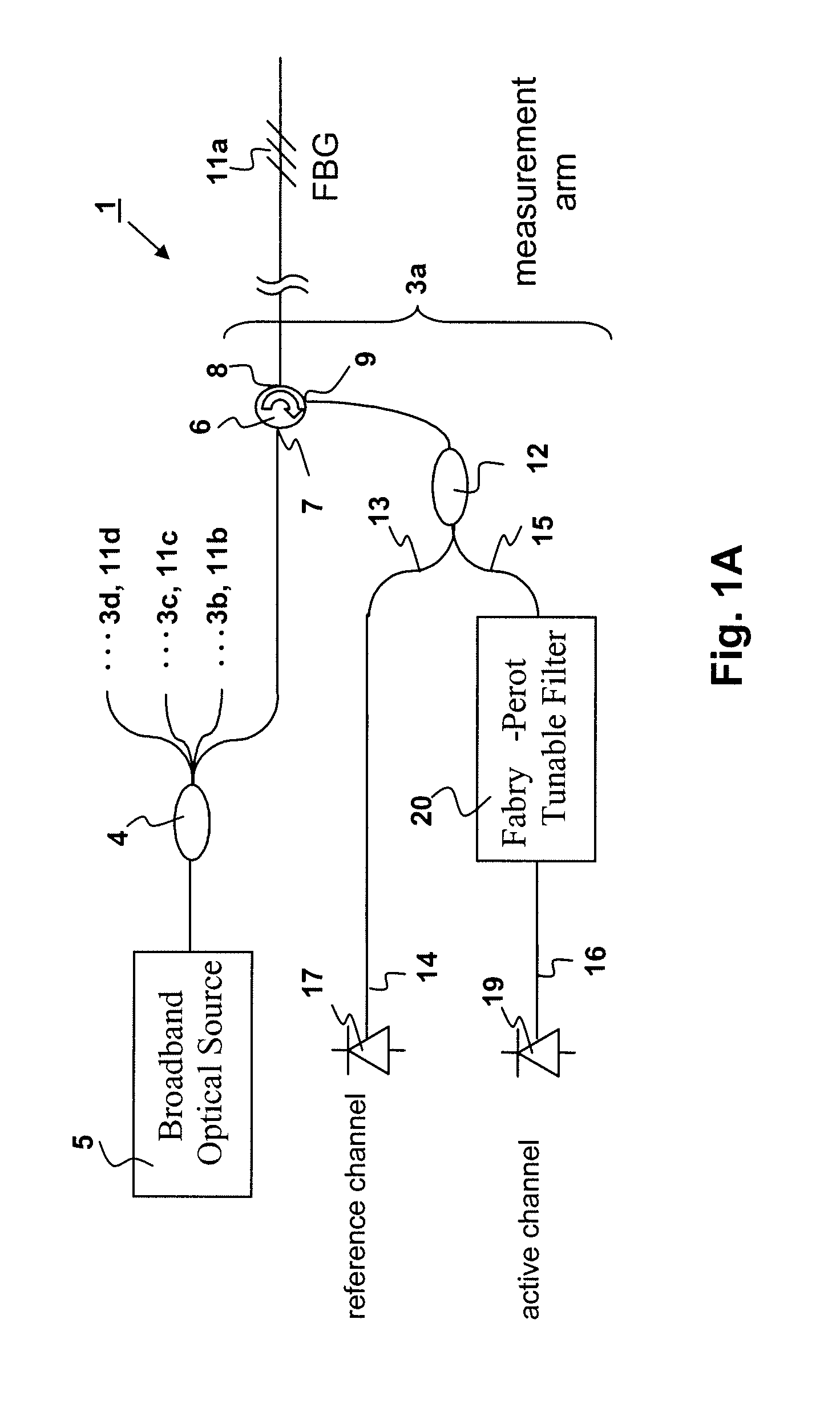Method and apparatus for high frequency optical sensor interrogation
a high-frequency optical sensor and interrogation technology, applied in the field of high-frequency optical sensor interrogation, can solve the problems of reducing the measurement sensitivity of the system designed with a laf, reducing the optical intensity variation per unit sensor wavelength shift, and narrowing the wavelength range of the sloped transmission section of such filters. , to achieve the effect of accurately resolving the fundamental vibration mode frequency and high sensitivity
- Summary
- Abstract
- Description
- Claims
- Application Information
AI Technical Summary
Benefits of technology
Problems solved by technology
Method used
Image
Examples
Embodiment Construction
[0069]“Fiber Bragg Grating or FBG” refers to a periodic perturbation of the effective index of an optical fiber, yielding a narrow band reflection profile, the wavelength of which is sensitive to both temperature and strain. FBGs are used as sensing agents for both strain and temperature. FBGs (and optical sensors containing them) have a characteristic “Center Wavelength” which refers to the nominal peak reference wavelength of its reflection profile.
[0070] The term “optical sensor” refers generally to any class of optical component which reflects a specific narrowband optical spectrum that is affected by physical or environmental factors, such as strain, temperature, or other factors. Though the Fiber Bragg Grating is the most common and most obvious of such components, other components such as certain Fabry-Perot etalons can also function as optical sensors
[0071] Fiber optic sensors (also called optical fiber sensors) are fiber-based devices for sensing changes in some property ...
PUM
 Login to View More
Login to View More Abstract
Description
Claims
Application Information
 Login to View More
Login to View More - R&D
- Intellectual Property
- Life Sciences
- Materials
- Tech Scout
- Unparalleled Data Quality
- Higher Quality Content
- 60% Fewer Hallucinations
Browse by: Latest US Patents, China's latest patents, Technical Efficacy Thesaurus, Application Domain, Technology Topic, Popular Technical Reports.
© 2025 PatSnap. All rights reserved.Legal|Privacy policy|Modern Slavery Act Transparency Statement|Sitemap|About US| Contact US: help@patsnap.com



